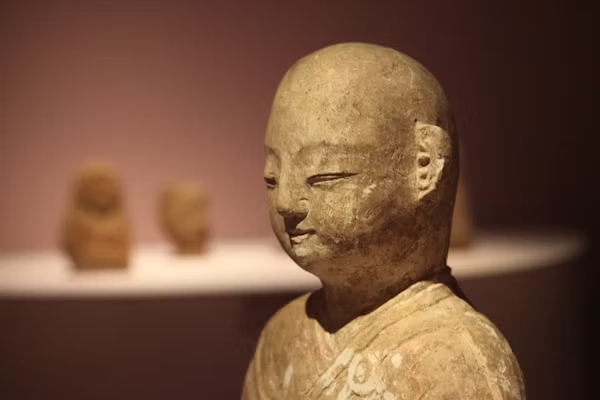Introduction
In the global landscape of media, some works achieve notoriety not because of their artistry or popularity but because of the controversies they ignite. Shoujo Ramune, a Japanese adult animation (hentai) released in 2016, stands as one of the most debated examples of this phenomenon. The anime gained attention due to its explicit themes, particularly its portrayal of underage characters in sexual contexts, which positioned it at the center of discussions about censorship, artistic freedom, legality, and morality.
This article examines Shoujo Ramune not as entertainment to be celebrated, but as a cultural artifact whose existence reveals deep fault lines in how societies across the world grapple with free expression, cultural relativism, and the protection of vulnerable groups.
Background and Context
Hentai and Adult Animation in Japan
Japan has a long history of erotic art and adult-oriented storytelling. From Edo-period shunga woodblock prints to modern-day manga and animation, sexual content has been a recurring feature of Japanese cultural production. In the postwar period, this tradition extended into anime and manga, producing the genre now internationally recognized as hentai.
While hentai encompasses a wide range of themes, subgenres that explore taboo or extreme content have often generated controversy both domestically and abroad. Shoujo Ramune emerged from this landscape, marketed toward a niche adult audience but eventually gaining global infamy due to its themes.
The Title and Content
The title Shoujo Ramune combines shoujo (a Japanese word typically referring to “young girl”) with ramune (a type of Japanese soda, often associated with childhood nostalgia). The juxtaposition underscores the unsettling thematic tension of the series, where innocence and childhood symbols are intertwined with adult sexualization.
Its narrative and imagery directly address taboo themes that would be illegal in many jurisdictions, sparking heated debate about the ethics of representation in fictional media.
The Central Controversy
At the heart of the controversy is the depiction of underage characters in sexual scenarios. In Japan, while real child exploitation is strictly illegal, drawn or animated depictions occupy a legal gray zone. This has long been a subject of heated debate, both within Japan and internationally.
Critics argue that works like Shoujo Ramune normalize harmful ideas and contribute to a broader culture of exploitation. Supporters of free expression, however, claim that fictional depictions do not equate to real-world harm and should remain protected under artistic freedom.
This tension raises fundamental questions:
-
Should fictional media be censored when it portrays illegal or immoral acts?
-
Do such depictions encourage or enable harmful real-world behaviors?
-
Can cultural relativism justify the tolerance of media deemed unacceptable elsewhere?
Reception in Japan vs. Internationally
Domestic Reactions
In Japan, Shoujo Ramune did not generate the same level of mainstream outrage that it did internationally. The country’s legal framework tolerates certain fictional depictions that would be banned outright elsewhere. While controversial, it remained largely confined to adult markets, protected by existing freedom-of-expression norms.
That said, domestic debates around the ethical responsibilities of creators have grown stronger in recent years. Japanese activists and child protection organizations often point to works like Shoujo Ramune as examples of content that undermines broader social efforts to combat child exploitation.
International Reactions
Outside Japan, Shoujo Ramune was widely condemned. Western audiences, particularly in the United States, Canada, and Europe, often view any media sexualizing minors—real or fictional—as categorically unacceptable. Discussions in online communities, media outlets, and even policy circles framed the anime as an artifact that exposes significant cultural gaps between Japan and the rest of the world.
For many observers, Shoujo Ramune became a shorthand example in debates about whether freedom of expression has limits when vulnerable groups are represented.
Ethical Dimensions
The controversy surrounding Shoujo Ramune cannot be reduced to cultural difference alone—it touches on broader ethical principles.
Free Speech vs. Harm Principle
Supporters of unrestricted artistic freedom often invoke the principle that speech, even in its most controversial forms, should be protected unless it directly incites harm. Opponents argue that works like Shoujo Ramune contribute to harmful social attitudes, even if indirectly, and therefore cannot be separated from real-world consequences.
Fiction vs. Reality
One of the recurring debates centers on whether fictional depictions should be treated the same as real-life actions. Proponents of stricter regulation insist that representation can normalize behavior, while defenders maintain that no real harm is caused by consuming fictional works, however disturbing.
Cultural Relativism
Another dimension is the role of cultural relativism. Should countries respect Japan’s legal tolerance of certain fictional works, or should there be universal standards that override local traditions? This question lies at the heart of ongoing disputes about globalization, morality, and the sovereignty of cultural norms.
Broader Cultural Implications
Reflecting Social Tensions
The existence of Shoujo Ramune reflects broader social tensions in Japan regarding sexuality, media, and cultural identity. Its production highlights both the creative freedom of niche media markets and the difficulty of reconciling that freedom with global ethical expectations.
Symbol of Global Debate
Internationally, the anime has become a case study in media ethics courses, academic discussions, and activist circles. It is less important as a piece of art than as a symbol of what societies choose to tolerate or reject.
Censorship and Artistic Expression
The controversy also ties into the wider global conversation about censorship. Where does one draw the line between protecting society and stifling creativity? Who gets to decide which works are acceptable? Shoujo Ramune forces these questions to the forefront.
Legacy and Continuing Relevance
Although Shoujo Ramune itself is not a mainstream title, its notoriety ensures its ongoing relevance in debates about media regulation, freedom of speech, and cultural relativism. Its legacy is not tied to artistic merit but to the unresolved questions it raises about the limits of creative expression.
In academic, cultural, and policy discussions, the anime continues to be referenced as a controversial cultural artifact, illustrating the challenges of regulating media in a globalized world.
Conclusion
Shoujo Ramune is not a work celebrated for artistry or storytelling. Instead, it is a flashpoint in cultural discourse, embodying the tensions between tradition and global norms, freedom of expression and social responsibility, fiction and reality.
As societies grapple with the ethical boundaries of media, Shoujo Ramune serves as a stark reminder that what one culture tolerates may be unacceptable to another. Its existence forces us to ask difficult questions: How do we balance artistic freedom with the need to protect the vulnerable? Can cultural relativism justify tolerance of works widely deemed harmful? And, ultimately, where do we draw the line between imagination and responsibility?






